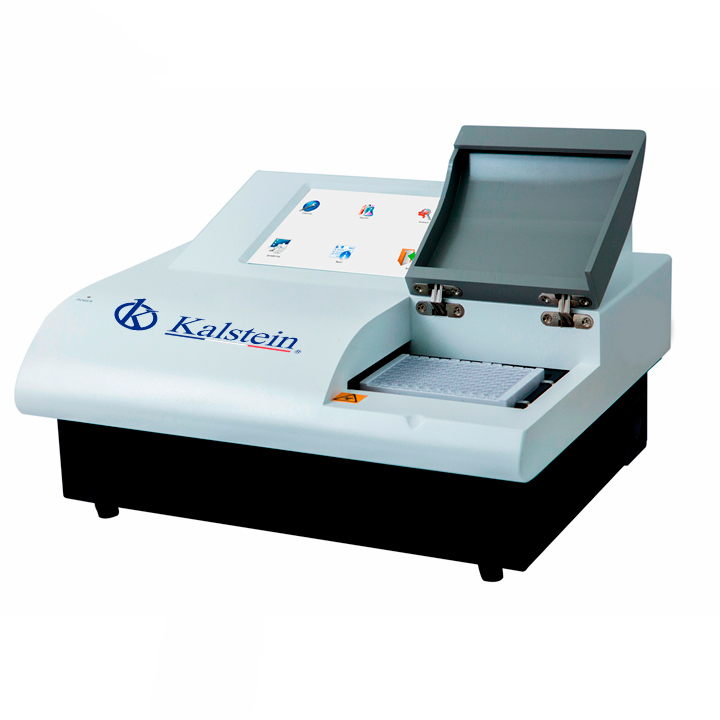An ELISA Reader is a specialized spectrophotometer, designed to read the results of this technique which is used to determine the presence of specific antibodies or antigens present in a sample. This technique is based on the detection of an antigen immobilized on a solid phase, by antibodies that, directly or indirectly, produce a reaction whose product can be read by the spectrophotometer.
What are the equipment required to perform ELISA tests?
To develop the ELISA technique it is necessary to have at least the following equipment
• An ELISA reader.
• An ELISA washer.
• A liquid dispensing system. (Multichannel pipettes can be used).
• A specialized incubator for plates.
What is the operating principle of an ELISA reader?
As already mentioned, the ELISA analyzer is a specialized spectrophotometer. Unlike conventional spectrophotometers that allow readings in a wide range of wavelengths, this has filters or diffraction gratings that limit the range of wavelengths to those used in the ELISA technique, which is usually performed with wavelengths between 400 and 750 nm –anometers–. Some analyzers operate in the ultraviolet range and can perform analyzes between 340 and 700 nm.
How should this equipment be calibrated?
The calibration of an ELISA analyzer is a specialized process that must be carried out by a properly trained technician or engineer, following the instructions that each manufacturer provides for this purpose. To carry out the calibration it is necessary to have a set of gray filters, which are mounted on a plate of the same geometry as those used to perform the analyzes. Manufacturers supply these filters and can be used to perform calibrations at any wavelength that the equipment uses.
What should you keep in mind when using an ELISA reader?
• The equipment must be operated in a clean and dust-free environment.
• The work table where the equipment is placed must be a stable area. It is recommended that it is away from equipment that generates vibrations – centrifuges, agitators -, that has an adequate size that allows to locate, next to the ELISA analyzer, the complementary equipment required to perform the technique in question: washers, incubator, dispenser and computer with peripherals.
• The power supply must be constructed in accordance with the standards and standards established by the manufacturer. In American countries, voltages of 110 V and frequencies of 60 Hz are generally used.
What routine should you follow for the basic maintenance of this reader?
• Check that the optical sensors of each channel are clean. If dirt is detected, clean the surface of the windows of the light emitters and the sensors with a brush.
• Confirm that the lighting system is clean.
• Verify that the analyzer calibration is adequate. When daily operations begin, allow the analyzer to warm up for 30 minutes. Next, perform a blank reading and then read a module full of substrate. The readings must be identical. If they are not, reverse the module and repeat the reading, in order to determine if the deviation originates from the module or the reader.
• Examine the automatic feed of the plate. It must be smooth and constant.
In Kalstein we offer you, a novel ELISA reader that will allow you to offer the best analysis since it has the best technology. That’s why we invite you to take a look HERE

